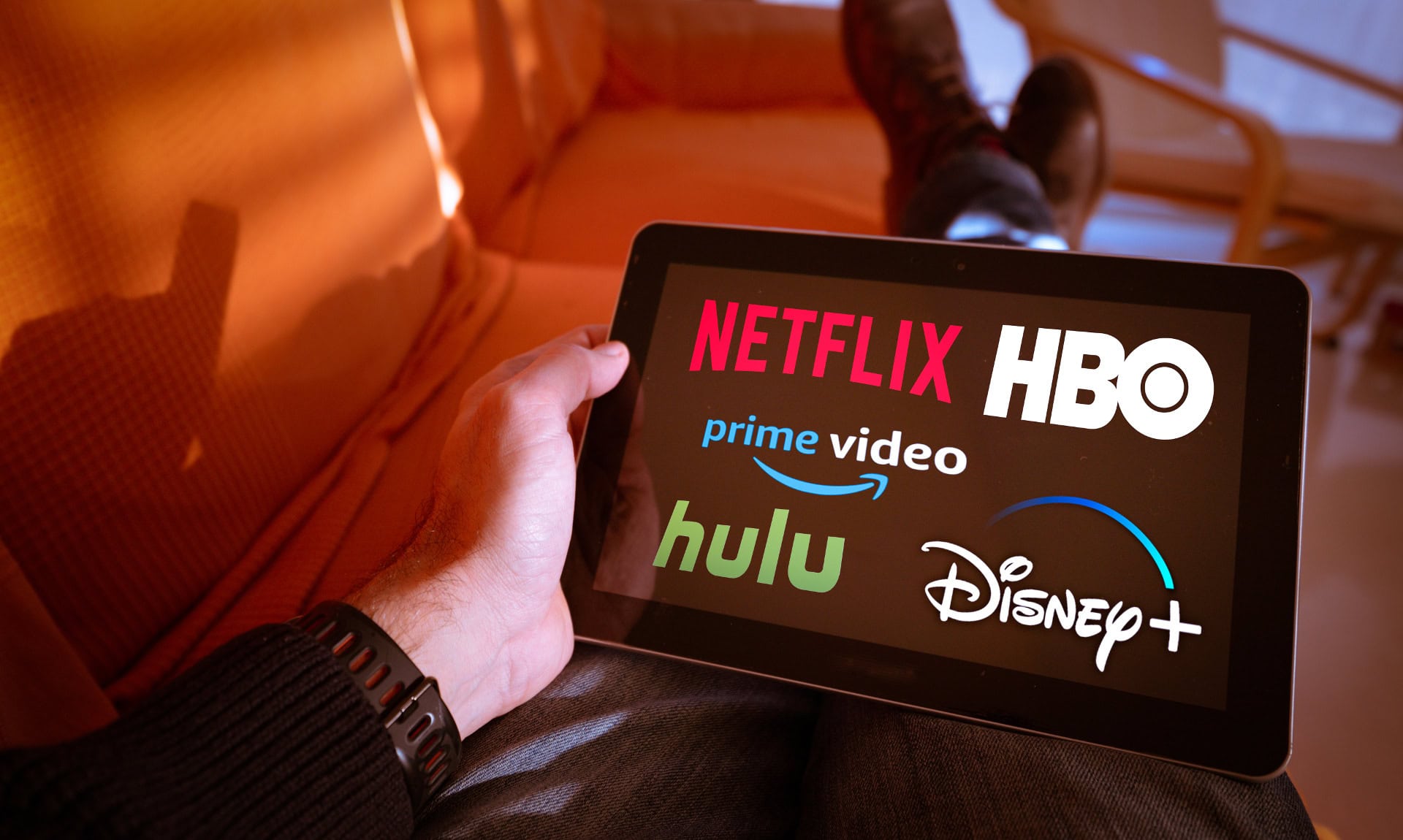
Streaming TV Advertising: Complete Guide for 2024
Streaming TV advertising has become a pivotal strategy for marketers aiming to reach a digitally savvy audience in 2024. As consumers increasingly shift towards streaming services for their entertainment needs, the opportunity to place streaming ads has expanded dramatically.
This article explores the intricacies of advertising on streaming services, offering a comprehensive guide to harnessing the potential of streaming TV ads.
What Is Streaming TV Advertising?
Streaming TV advertising refers to the placement of commercials within video content streamed over the internet through various platforms and services.
Unlike traditional television advertising, streaming TV ads can be more precisely targeted to specific demographics based on viewers’ online behaviors and preferences. This method allows marketers to reach audiences more effectively with personalized messages, often leading to higher engagement and conversion rates.
Streaming Advertising vs Connected TV (CTV)
Connected TV (CTV) advertising is specifically tailored for content viewed on devices capable of connecting to the internet, such as smart TVs and gaming consoles.
While streaming advertising encompasses a broader spectrum that includes any digital ads delivered across streaming services on any device, CTV focuses solely on internet-enabled television sets.
Streaming Advertising vs Over-The-Top (OTT)
Over-The-Top (OTT) advertising targets viewers directly through internet streaming services, bypassing traditional cable, broadcast, and satellite television platforms.
While streaming advertising can occur on both OTT services and digital platforms, OTT advertising specifically refers to ads delivered on platforms that stream content over the Internet without the need for traditional TV infrastructure.
- Learn more about OTT vs CTV.
Benefits of Streaming TV Ads
Streaming TV ads offer a range of benefits that enhance the efficiency and effectiveness of digital marketing campaigns, well beyond that of linear TV advertising. Some advantages of steaming advertising include:
1. Targeting Audiences with Precision
Streaming advertising enables advertisers to utilize data such as user preferences, viewing habits, and demographic information to target specific audience segments. This precision targeting ensures that ads are served to viewers who are most likely to be interested in the product or service, increasing relevance and response rates.
2. Localized Targeting Using IP Addresses
Ads can be tailored and delivered based on the viewer’s IP address, allowing for highly localized advertising. This capability makes it possible to customize messaging and offers to regional or even city-specific audiences, enhancing the relevance and impact of local TV advertising campaigns.
3. Elevated Video Completion Rates
Streaming TV ads typically see higher video completion rates compared to other digital advertising formats. Viewers engaged with content on streaming platforms are more likely to watch these ads to completion, providing advertisers with a captive audience and extended exposure.
4. Real-Time, Accurate Measurement and Attribution
Streaming platforms are true performance marketing platforms. They offer advanced analytics tools that provide real-time insights into ad performance and viewer engagement. Proper CTV attribution allows marketers to accurately measure the effectiveness of their ads and attribute conversions directly to specific campaigns.
5. Automated Optimization of Campaigns
Many streaming platforms incorporate machine learning algorithms that automatically optimize campaigns based on performance data. This automation helps in refining targeting, adjusting bid strategies, and reallocating budgets to maximize ad efficacy and ROI.
How Does Streaming Advertising Work?
Streaming advertising employs a systematic approach to ensure ads reach the right audience with impactful messages, engaging viewers effectively across various platforms. The basic step-by-step process looks something like this:
- Step 1: Audience Selection: Marketers define their target audience based on demographic data, interests, and viewing behaviors, selecting those most likely to respond to the ad.
- Step 2: Creative Development: Creative teams design and produce engaging ad content tailored to the selected audience, focusing on relevance and appeal.
- Step 3: Ad Placement: The ads are then placed within streaming content that the target audience is likely to watch, either during breaks or as pre/post-roll spots.
- Step 4: Targeting and Delivery: Advanced algorithms are used to deliver programmatic ads to the targeted audience at optimal times, ensuring maximum visibility and engagement.
- Step 5: Viewer Interaction: Viewers interact with the ads, which may include clickable elements leading to product pages or promotional offers.
- Step 6: Measurement and Analysis: The performance of each ad is continuously measured using metrics like views, interactions, and conversion rates.
- Step 7: Optimization: Based on the data collected, campaigns are fine-tuned in real-time to improve targeting, creative content, and overall ad effectiveness, maximizing ROI.
What Streaming Platforms Serve Ads?
Several major streaming platforms have embraced advertising to monetize their content and provide targeted opportunities for marketers. Some are lower-cost subscription services while others are free ad-supported TV (FAST) channels.
- Hulu: Offers ad-supported plans that integrate commercials into its streaming content. (Learn more about Hulu advertising.)
- Netflix: A more affordable ad-supported plan includes 4 to 5 minutes of advertisements per hour. (Learn more about Netflix advertising.)
- YouTube: As one of the largest platforms for video content, YouTube places ads before, during, and after videos.
- Peacock: NBCUniversal’s streaming service provides various ad-supported viewing options. (Learn more about Peacock advertising.)
- Roku: Through the Roku Channel, the platform serves ads across its extensive range of streaming content. (Learn more about Roku advertising.)
- Amazon Prime Video: Introduces limited advertising on its platform, primarily through its IMDb TV service.
- Sling TV: Allows ad placements within its streaming of live and on-demand TV programming.
- Pluto TV: A free streaming service that includes ads to support its wide array of TV shows and movies.
- Tubi: Offers free streaming services supported by ads, with a vast library of films and TV shows.
- Paramount+: Features ad-supported tiers that include commercials within their streaming content.
Types of Streaming TV Ads
Streaming TV ads come in various formats, each designed to cater to different marketing strategies and viewer preferences.
- Pre-Roll Ads: These are short commercials that play before the start of a streaming video, capturing viewers’ attention right at the beginning.
- Mid-Roll Ads: Similar to traditional TV commercials, mid-roll ads appear during breaks in the middle of the video content, keeping viewers engaged throughout the streaming experience.
- Post-Roll Ads: These ads play after the video content has ended, targeting viewers who watch through to the conclusion.
- Pause Ads: When viewers pause their video, these ads appear on the screen, taking advantage of the idle screen space.
- Overlay Ads: Small ads that appear over the bottom part of the video content, overlays are less intrusive and allow viewers to continue watching while still seeing the ad.
- Interactive Ads: These ads offer interactive elements like clickable buttons that can lead to more detailed content, encouraging direct engagement from viewers.
- Branded Content Integration: Involves integrating the brand directly into the content, creating a seamless advertising experience that feels part of the show or movie.
How Are Streaming TV Audiences Targeted?
Streaming TV ads allow for sophisticated targeting techniques that harness detailed viewer data to reach specific audience segments effectively. Though, it varies by platform, here are a few ways audiences can be targeted:
- Demographic Targeting: Advertisers can target audiences based on basic demographic information such as age, gender, and income.
- Geographic Targeting: Ads can be tailored to audiences based on their geographic location, from broad regions down to specific zip codes.
- Behavioral Targeting: By analyzing viewing habits and online behaviors, advertisers can target users who exhibit certain behaviors like frequent streaming of specific genres or shows.
- Interest-Based Targeting: Ads are shown to viewers who have shown interest in similar products or services on other platforms.
- Device Targeting: Advertisers can specify the type of devices on which the ads should appear, such as smart TVs, mobile phones, or tablets.
- Time-Based Targeting: This involves scheduling ads at specific times when target audiences are most likely to be watching.
- Purchase Intent: Utilizing data from past purchases or search history related to specific products or services to target users likely to convert.
- Retargeting: Serving ads to users who have previously interacted with a brand but did not complete a purchase, encouraging them to revisit and potentially finalize the transaction. (Read our guide on CTV retargeting.)
Streaming Advertising Metrics and Measurement
Streaming advertising platforms provide a comprehensive suite of marketing metrics that allow advertisers to track and analyze the success of their campaigns in real-time. Again, this varies by platform, but some CTV metrics you should expect to see are:
- Impressions: Counts the total number of times an ad is displayed to viewers, regardless of clicks or engagement.
- Return on Ad Spend (ROAS): Measures the revenue generated for every dollar spent on advertising, indicating the effectiveness of the investment.
- Cost per Completed View (CPCV): Reflects the expense incurred for each viewer who watches an ad to completion, emphasizing engagement quality.
- Cost per Acquisition (CPA): Represents the cost associated with acquiring one new customer through the advertisement, crucial for budgeting and assessing campaign value.
- Reach: Identifies the number of unique viewers who have seen an ad at least once, crucial for understanding the scope of ad exposure.
- Frequency: Shows the average number of times a single viewer sees an ad, useful for gauging exposure and avoiding ad fatigue.
- Gross Rating Point (GRP): Calculates exposure by adding up ratings, which are the percentage of the target audience reached by an ad.
- Cost Per Point (CPP): Determines the cost-effectiveness of an advertising campaign by showing the expense required to reach 1% of the target audience.
- Cross-Screen Measurement: Tracks and evaluates how ads perform across different devices, ensuring effective coverage and engagement.
- Target Rating Point (TRP): Focuses on the specific demographic targeted by an ad, measuring the percentage of that group reached by the campaign.
How Much Does Streaming TV Advertising Cost?
The cost of streaming TV advertising can vary widely depending on several factors. Key determinants include the CTV advertising platform used, the specificity of audience targeting, and the ad format, such as pre-roll or mid-roll placements.
Additionally, TV advertising costs on streaming services are influenced by the campaign’s reach and duration, as well as the competitive landscape during high-demand periods like major sports events or holiday seasons.
Streaming TV Advertising Best Practices
To maximize the effectiveness of streaming TV advertising, brands should adhere to a set of best practices and strategies tailored to this unique medium.
- Optimize Creative for Platform: Tailor ad creative to align with the viewing experience and technical specifications of different streaming platforms. Read our complete guide on connected TV ad specs.
- Use A/B Testing: Regularly test different versions of ads to determine which elements perform best in terms of viewer engagement and conversion rates.
- Incorporate Seamless Integrations: Develop ads that feel native to the content being viewed, minimizing disruption and enhancing viewer receptivity.
- Leverage Advanced Analytics: Utilize the comprehensive data analytics provided by streaming platforms to continually assess and refine campaign performance.
- Focus on Storytelling: Create compelling narratives that resonate emotionally with audiences, which can increase recall and brand affinity.
- Ensure Mobile Optimization: Since many users access streaming content on mobile devices, ensure ads are optimized for smaller screens and variable internet speeds.
- Prioritize Ad Timing: Strategically time ads based on viewer habits and content engagement peaks to catch audiences at the most receptive moments.
- Engage with Interactive Elements: Include interactive features such as clickable calls to action or quizzes, which can enhance engagement and drive direct responses.
- Maintain Brand Consistency: Keep messaging and visual elements consistent across all ads to strengthen brand recognition and trust.
- Monitor Competitor Campaigns: Stay informed about competitors’ strategies and performance in the space to identify opportunities and refine your approach.
Streaming Advertising Examples
Several top brands have successfully leveraged streaming TV advertising to enhance their market presence and connect with target audiences; here are five notable examples:
- Coca-Cola: Utilized mid-roll ads during popular streaming shows to promote new flavors, enhancing viewer engagement with nostalgic and heartwarming creative content that echoes their global campaigns.
- Nike: Launched a series of inspirational pre-roll ads on sports streaming platforms, featuring athletes’ stories to boost their brand connection with fitness enthusiasts.
- BMW: Featured interactive ads on luxury lifestyle and automotive streaming channels, allowing viewers to explore different car models and features directly within the ad.
- Samsung: Employed cross-screen measurement for their campaign on smart TV and mobile platforms, showcasing the seamless connectivity of their electronic products through high-definition visuals and dynamic product demonstrations.
- Netflix: Used pause ads on their own platform to promote upcoming series and movies, cleverly timing the exposure based on viewer’s binge-watching habits to maximize anticipation and engagement.
Advertising on Streaming Services: Final Thoughts
Streaming TV advertising offers a dynamic and effective way for brands to reach diverse audiences through precisely targeted, engaging content. By understanding the different types of ads, metrics for success, and best practices, marketers can craft campaigns that not only capture attention but also drive meaningful engagement and measurable results.
As the landscape of digital media continues to evolve, staying informed and adaptable will be key to leveraging the full potential of advertising on streaming services.
News Via Inbox
Get our monthly report on all the latest and greatest trends in digital marketing.



